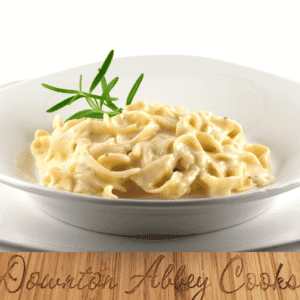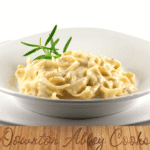
History of Fettucine Alfredo
It was created in 1914 by Alfred Di Lelio, who opened a restaurant in Rome, Italy, under his first name on the Via della Scrofa in 1910. The dish supposedly helped restore the appetite of his wife after she gave birth to their son. The original dish was made with a very rich triple butter Di Lelio made himself, three kinds of four, and only the heart of the best Parmigiano.
Fettuccini all’Alfredo became famous after Hollywood movie actors Douglas Fairbanks and Mary Pickford ate the dish at Alfredo’s restaurant while on their honeymoon in 1927. In the 1960s it took on cult status on dinner tables across the US.
Authentic Italian Fettucine Alfredo
Equipment
Ingredients
- 1 lb. fettuccine
- 1 pinch Salt
- 2 cups Parmigiano-Reggiano grated plus more for serving
- 5 tbsp. unsalted butter cut into 5 pieces
Instructions
- Bring 3 quarts water to boil in a pasta pot. Add pasta and 1 tablespoon salt and cook, stirring frequently, until al dente. Reserve 1 cup cooking water, then drain pasta and return it to the pot.
- Add Parmigiano-Reggiano, butter, reserved cooking water, and 1/2 teaspoon salt to pot. Set pot over low heat and, using tongs, toss and stir vigorously to thoroughly combine, about 1 minute. Remove pot from heat, cover, and let pasta sit for 1 minute.
- Toss pasta vigorously once more so sauce thoroughly coats pasta and any cheese clumps are emulsified into sauce, about 30 seconds. (Mixture may look wet at this point, but pasta will absorb excess moisture as it cools slightly.) Season with salt to taste.
- Transfer pasta to individual bowls. (Use rubber spatula as needed to remove any clumps of cheese stuck to tongs and bottom of pot.) Serve immediately, passing extra Parmigiano-Reggiano separately.

